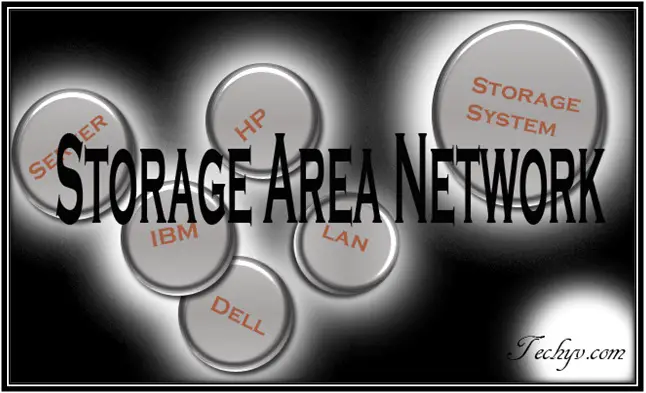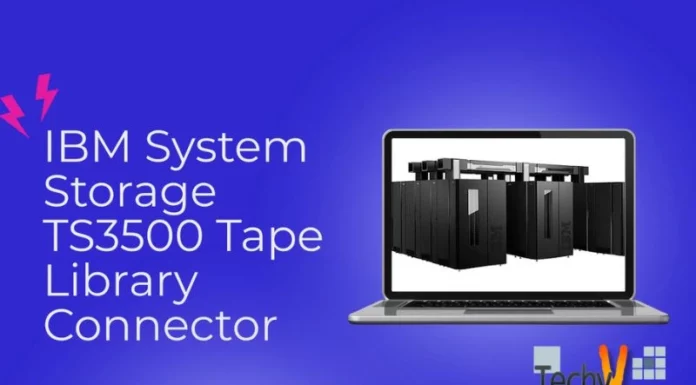Storage Area Network
Storage Area Network is a network or sub-network of shared data storage devices. It is a high speed special purpose network that connects multiple data storage devices to the associated servers for access by multiple users.
In other words, the basic purpose of a SAN network is to establish a communication between server/computers and storage. The storage devices used in Storage Area Network include robotic libraries, disk arrays, file servers etc. The increase in SAN usage has encouraged the development of a new array of storage devices which promise improved functioning. Optical fiber or copper cables are used to connect the storage devices on a SAN network. The selection depends on number of computers, speed and distance requirements of the network.

SAN originated to cope with the problems associated with traditional data storage. In an enterprise, data on inpidual servers is scattered across various workgroups (departments). This results in a multiple server workplace which is very tiresome to organize and manage. Securing and updating the information on multiple servers and unnecessary redundancy are an additional issue. A Storage Area Network overcome these issues by moving the storage devices (storage resources) from inpidual servers to an independent high performance storage network to which all the inpidual servers are connected. This provides universal connectivity and reduces the time required to save and retrieve data. SAN overshine the concept of a single computer server that owns data. In a SAN network, only a logical change of storage device ownership is required if a server needs data that was produced by another server. The biggest benefit of SAN is a reduction in the overall cost that is incurred to manage an enterprises data. These includes:
- Savings in terms of capital costs; less number of costly storage devices (like disk arrays) and servers (computers) to be used to manage data. No need of purchasing additional storage devices for staging one servers data at another server.
- Savings in terms of operational and administrative costs i. e. less number of people required to manage implement the same procedures as with inpidual servers.
- Allows more frequent backups without having an impact on application servers which means more up to date restores in case of failures.
- Permits addition of storage devices.
- No need to worry about data redundancy as all the computers work on the same copy of information.
To manage a Storage Area Network, the storage resources must be configured, allocated, tested and maintained. Any change in the number of storage devices must also be monitored. Storage Resource Management (SRM) applications are designed to manage SAN resources. SRM applications are available from HP, IBM, Dell, Symantec Corp. etc. An ideal SRM should detect storage resources, assess their capacity and support consistent policies among the storage technologies used.
The following are the list of SRM applications provided by major vendors:
1. IBM
a. Tivoli advanced allocation management.
b. Storage enterprise resource planner.
c. Tape manager
2. HP
a. HP SAN works
b. HP storage essentials.
c. HP storage works.
3. Dell
a. Array evacuation
b. Automatic load balancing.
c. Complete SAN virtualization.


















